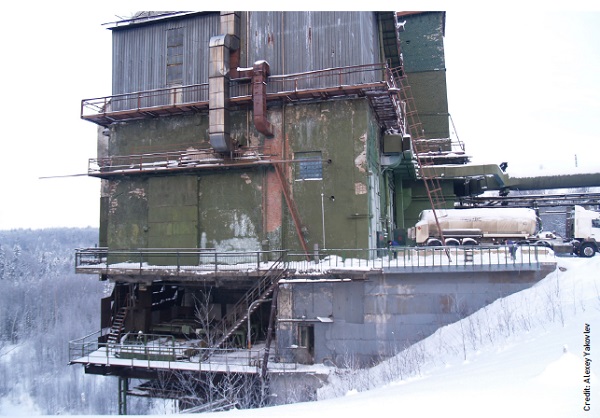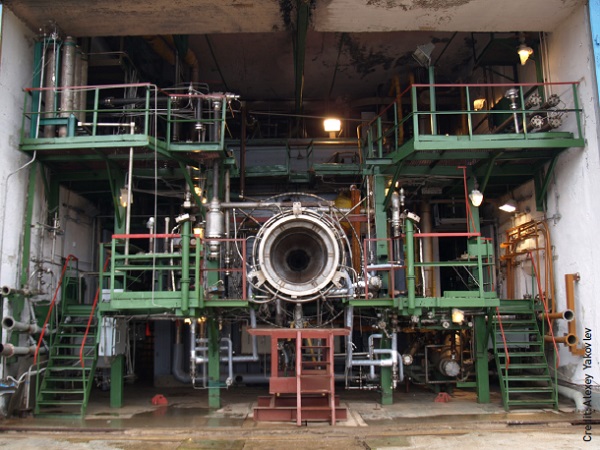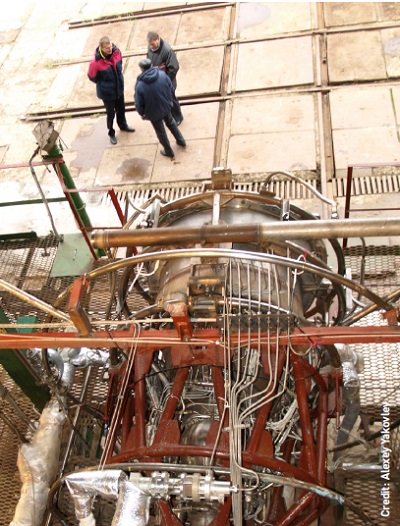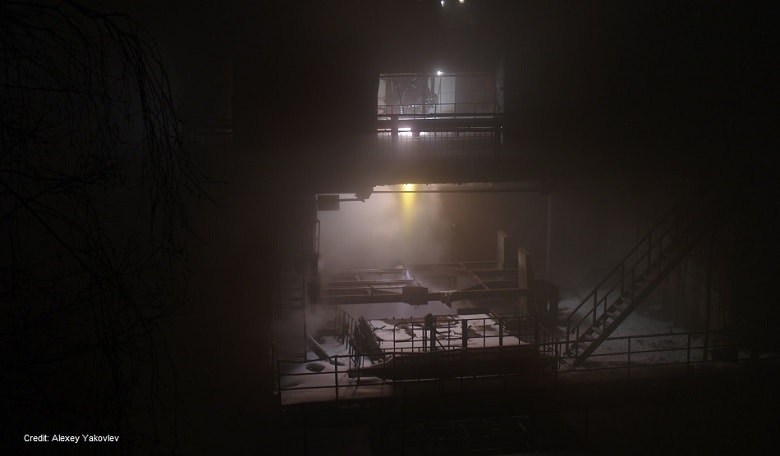Space rockets are at a crossroads. Global trends dictate that prices in the space sector should go down, while environmentally conscious practices should widen.
Engineers are tasked with designing new liquid-based rocket engines (LREs) that use environmentally friendly fuel. This involves replacing the expensive and highly energyintensive liquid hydrogen with cheap liquefied natural gas (LNG) that has a methane content of 90-98%. Together with liquid oxygen, this fuel allows for the creation of new, highly effective, low-cost engines that would heavily rely on existing components.
LNG has a number of advantages. It is not toxic. Unlike kerosene, which is widely used in rocket technology, LNG evaporates quickly, without harming the environment. Its ignition temperature with air and the lower limit of its explosive concentration are higher than that of hydrogen and kerosene vapor. This means that at low concentrations it is less explosive as compared to other hydrocarbon fuels.
Overall, using LNG as rocket fuel does not require any additional safety measures, with regards to fires and explosions, besides those that have already been established. Finally, both the production and transportation of LNG have long been mastered. However, there are some trade-offs.
Although the density of LNG is six times higher than that of liquid hydrogen, it is only half that of kerosene. This smaller density leads to a corresponding increase in the size of the LNG tank as compared with a kerosene tank. However, given other factors, the total amount of fuel needed increases only by about 20%, and the increase in weight will be relatively small also.
The Isayev Chemical Engineering Design Bureau (commonly abbreviated to KBhimmash in Russian) is located in the town of Korolyov in the Moscow region of Russia. Work began here on the development of LOX + LNG fuel in 1994. That was when we did a combined engineering and design study and decided to create a new engine, which would use existing oxygen-hydrogen KVD1 7.5 ton traction engines, which were successfully operated as a part of the 12KRB cryogenic upper stage on the Indian launch vehicle GSLV MkI, otherwise known as the Geosynchronous Satellite Launch Vehicle. As it turned out, this work then extended over years, due to financing issues.
Testing begins
In 1996, we conducted an autonomous firing test of a gas generator using LOX and natural gas as fuel components. This was aimed mainly at checking launch modes and generator stability. Thirteen switch-ons confirmed the efficiency of the gas generator and produced results that were used in the development of regenerative gas generators working on open and closed combustion cycles.
This could help breathe life into resuable transportation systems. And it is systems like this which can force down the price of access to space and open up the high frontier for all of us.
During August and September of 1997, our design bureau conducted firing tests of the KVD1 steering engine block, also using natural gas instead of hydrogen. This design combined a deflector that could move in two planes to an angle of ± 39.5°, at a thrust of 200 kgf and a chamber pressure of 40 kg/cm2; start and stop valves; ф pyrotechnic ignition system and electric drives. One full steering unit KVD1 went through 6 switch-ons with a total running time of more than 450 seconds and chamber pressure in the range of 42 to 36 kg/cm2. The test results confirmed the possibility of creating a chamber of small proportions using natural gas as a coolant.
 Tankers brought in the fuel to be used by the engines during the test firing.
Tankers brought in the fuel to be used by the engines during the test firing.
In August 1997, the design bureau launched a full-scale firing test of the engine with closed combustion traction of 7.5 ton and LOX + LNG fuel. The basis for the production of the engine was a modified KVD1 with closed combustion; afterburning, and chamber cooling using fuel.
The test results confirmed the possibility of creating a chamber of small proportions using natural gas as a coolant.
During this campaign, the design of the regular oxidizer pump for KVD1 was finalised. The diameter of the impeller was increased to provide the required pump pressure ratio between the oxidiser and the fuel. Also there was an adjustment of the hydraulic motor setting routes for the settlement ratio of the components.
We used a prototype engine, which previously passed a cycle of fire tests with LOX + liquid hydrogen fuel, to ensure maximum reduction of costs for the study.
Cold tests allowed us to develop a methodology for preparing the motor and the facility for firing tests when it came to the required levels of LNG per facility containers, the cooling of oxidiser routes and fuel to temperatures that would ensure reliable operation of pumps during the start-up period, as well as a stable and steady starting of the engine.
The first firing test of the engine was conducted on 22 August 1997, at what is now called the Scientific Testing Centre for the Rocket and Space Industry (STS RSI). This was our design bureau’s first experience with using LNG as fuel in a fullsize, closed combustion engine.
These initial test results confirmed the possibility of using LNG as fuel in oxygenhydrogen engine units.
Later firings continued with a view to performing a more in-depth study of processes related to the use of LNG, including studying the operation of engine units in broader terms of use, as well as optimisation of design solutions.
From 1997 to 2005, there were a total of five firing tests on two KVD1 engines adapted to use LOX + LNG fuel. They lasted from 17 to 60 seconds, with the methane content of LNG ranging from 89.3 to 99.5%.
Overall, the results of these tests allowed us to define a set of guidelines for the development of the engine and its components using LOX + LNG fuel. In 2006, we moved to the next stage of research involving the development, manufacturing and testing of engine S5.86. Its combustion chamber, gas generator, turbopump unit and regulators were, in terms of structure and parameters, made specifically for using LOX + LNG fuel.
New engine, new challenges
By 2009, we had performed two firing tests of the S5.86 engine, lasting 68 and 60 seconds, with the LNG methane content 97.9 and 97.7% respectively.
 Engine S5.86 at the test facility.
Engine S5.86 at the test facility.
Positive results were obtained during most of the testing but one of the main tasks, an experimental verification of the absence of accumulation of solids in the cooling duct chamber (coke) and in the gas path (soot) during fairly long operating periods, could not be performed. This was because the size of the LNG tanks limited the maximum operating time to 68 seconds. Therefore, in 2010 it was decided to equip our facility for firing tests lasting no less than 1000 seconds.
…set a record operating time for an engine of this size by firing for 2007 seconds.
We picked the STS RSI facilities as our new workplace for testing the oxygen-hydrogen rocket engine because it had the capacity we needed for these longer firings. In preparation for the test, we considered the significant experience gained during the previous seven firing tests. Between June and September 2010, the liquid hydrogen systems were fine-tuned for the use of CNG, and the S5.86 No.2 engine was installed at the facility. We conducted comprehensive inspections of the measuring systems, control systems, and emergency protection systems. We also carefully reviewed the methods of adjustments of the ratio of consumption of fuel components and pressure in the combustion chamber.
The fuel tanks at the facility were filled from a transport tanker, which had a volume of 56.4 m3, and carried 16 ton of fuel. The LNG refuelling unit itself comprised a heat exchanger, filters, valves, gauges and so forth. After the tanks were refuelled, the engine’s fuel supply routes were cooled and filled.
The engine was switched on and worked normally, as different engine regimes were switched on using the control system. After the 1100 seconds, the temperature of gas inside the combustion chamber began to rise beyond our expectations. We decided to stop the engine. The command to switch off took place at 1160 seconds without additional problems. The cause of the temperature rise was determined to be a leak in the output collector of the cooling tract of the combustion chamber, due to a crack in the weld seam of the anechoic technical fitting mounted on the collector. Analysis of the results led to these conclusions:
- During operation engine parameters were stable during various combinations of the ratio of fuel components consumption (2.42:1 & 3.03:1) and traction control (6311 & 7340 kg);
- We confirmed the absence of the formation of solids in the gas tract and the lack of coke in the liquid tract of the engine;
- We obtained the necessary experimental data to refine the methodology for calculating the cooling of the combustion chamber when using LNG as a coolant;
- We researched the dynamics of the output of the combustion chamber’s cooling tract during steady thermal conditions;
- We confirmed that our systems could ensure launch, control, and regulation of the engine with LNG;
- The developing S5.86 engine with a 7.5 ton thrust can be used alone or in conjunction as the main engine in prototype boosters and upper stages of launch vehicles;
- The positive results of firing tests have confirmed the feasibility of further experiments on the creation of the an engine running on LOX + LNG fuel.
Next phase of testing
During the next firing test, performed in 2011, the engine was switched on twice. Before it was switched off for the first time, the engine had been running 162 seconds. The second switching on was conducted to confirm the absence of solids in the gas tract and the absence of coke in liquid tract. It also set a record operating time for an engine of this size by firing for 2007 seconds. Finally, the test confirmed that throttling was possible to control the thrust. The tests were stopped only because all the fuel components had been consumed.
The total operating type for this engine was now 3389 seconds (4 switch-ons). We also carried flaw detection and confirmed the absence of formation of solids and coke in the engine tracts.
The entire set of theoretical and experimental work on S5.86 No.2 confirmed the following:
- The feasibility of developing an engine running on LOX + LNG fuel, with afterburning of reduced producer gas, thus maintaining a stable performance and a virtual absence of solids in the gas tract and coke in the liquid tract of the engine;
- The feasibility of repeatedly starting and stopping such an engine;
- The feasibility of the engine’s continuous operation;
- The correctness of the technical solutions we adopted to ensure multiple launches, engine control, regulation allowing for the specific nature of LNG, and emergency protection;
- Opportunities for long-term tests at the SIC RCP facility.
In conjunction with SIC RCP, we developed technology for the transportation, refuelling and temperature control of large masses of LNG, as well as waste processing solutions. Due to funding problems, components and units of S5.86 No. 2 were not fully optimised, which is why we did not resolve the following issues:
- Clarifying the thermo-physical properties of LNG as a coolant;
- Getting additional data to verify the convergence of the characteristics of main engine units in water-based and LNGbased simulations;
- Experimental data regarding the possible influence of the composition of natural gas on the main engine units, including the cooling duct and the combustion chamber of the gas generator;
- Establishing how LREs behave under a wide range of operating modes and basic settings, during single and in multiple switch-ons;
- Optimisation of dynamic processes during start-up.
To solve these, we manufactured the S5.86A No.2A. This was an upgraded engine. Its turbopump unit was equipped with a turbine starter, a modernised main fuel pump and turbine for the first time. We upgraded the cooling duct of the combustion chamber and re-orientated the throttle needle ratio with respect to fuel components.
 A test engine at the facility.
A test engine at the facility.
The engine was tested on September 13, 2013, with the methane content of the LNG fixed at 94.6%. The test program was meant to include three switch-ons (1300s, 100s, 100s) lasting 1500 seconds in total. However, at 532 seconds, the emergency protection system kicked in and performed an emergency shutdown. The cause of the accident was a small metal particle that lodged itself in the setting of the oxidiser pump.
Despite this, S5.86A No.2A operated for long enough: for the first time, we started an engine intended for use in a rocket stage intended for multiple launches, via a scheme implemented by using an on-board, replenishable pressure accumulator. We also obtained stable operation with a set mode of traction and, based on previous attempts, a maximum consumption ratio for the fuel components. We determined possible reserves for forcing traction and increasing the ratio of consumption of fuel components.
Now, we are working on a new S5.86 engine. It should become a full-fledged prototype of an engine running on LOX + LNG fuel, creating new advances for upper rocket stages. This could help breathe life into resuable transportation systems. And it is systems like this which can force down the price of access to space and open up the high frontier for all of us.














